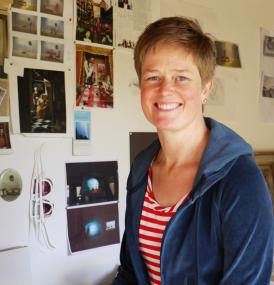The Contemporary Glass Society (CGS), an organization based in the United Kingdom, was recently awarded Charity Status. This legal step, completed on August 14th, 2013, is part of a transition to self-sustainability. The CGS has been reinventing itself since it lost its annual grant of ₤50,000 from the Arts Council of England, which was announced in March of 2011. The CGS has been the UK’s foremost organization for glass art for over 15 years and boasts an international membership of 700 mostly artists hailing fromEurope, Asia, and South America. The organization also has connections to manufacturers, galleries, academics, and various artists in the glass trade. The CGS seeks to support to established and up-and-coming artists as well as students in the glass field through workshops, exhibitions, conferences, and various forms of promotional aid through its website and print publication, Glass Network.
 The Contemporary Glass Society was founded in 1997 by Peter Layton, former chairman of the now-defunct British Artists in Glass Society (BAG), which dissolved in 1992. The primary focus of CGS became the “representation of the interests of glassmakers within the national and international community,” according to CGS’s history page. Without the support of the Arts Council of England, 2012 was a watershed year for CGS, which was forced to rethink its mission and funding model. The new strategy involved an increase in membership fees, which had remained constant for 10 years. In addition, the organization had to “…[S]top and really think hard about our priorities for the future,” CGS administrator Pam Reekie (pictured, at right) told the GLASS Quarterly Hotsheet in an e-mail interview.
The Contemporary Glass Society was founded in 1997 by Peter Layton, former chairman of the now-defunct British Artists in Glass Society (BAG), which dissolved in 1992. The primary focus of CGS became the “representation of the interests of glassmakers within the national and international community,” according to CGS’s history page. Without the support of the Arts Council of England, 2012 was a watershed year for CGS, which was forced to rethink its mission and funding model. The new strategy involved an increase in membership fees, which had remained constant for 10 years. In addition, the organization had to “…[S]top and really think hard about our priorities for the future,” CGS administrator Pam Reekie (pictured, at right) told the GLASS Quarterly Hotsheet in an e-mail interview.
“We had to take stock on our core values and how we were going to raise income to ensure we had a strong future.” That year, only one glass organization was chosen for funding by the Arts Council, with over 206 similarly notable groups still in need of financial aid. This loss was seen by many as a threat to the UK’s already undersized glass community, whose artists’ access to such organizations can be few and far in between.
Another challenge has been meeting the memberships’ needs in exhibitions and conferences. While it enjoyed Arts Council’s support, CGS was able to plan conferences and schedule exhibitions ahead of time with the funds available. Without the support, such endeavors now require even more planning, with enough time to acquire finances through fundraisers, which has proven difficult in the diminishing glass scene.
As difficult as the loss was, the organization has found a way to turn a negative into a positive. CGS had no alternative to being restructured as an independent and self-sufficient entity, remaining resilient in the wake of the Arts Council’s decision. “Our structure has evolved over the past 10 years and works well,” elaborates Reekie. “For the long term, we realized that the type of Arts funding in England that we had been used to was not going to be available in the foreseeable future. We know we have to raise money for our core activities from our membership subscription, and to do this, we need around 900 by 2018, which is quite doable.”
Chief among its strategies is the continuous development of their website and publication, Glass Network, which offer distinguished spotlighting of artists within the organization, thus providing invaluable outreach and promotion for their work in addition to the creation and expansion of professional networking. CGS’s website alone is seen by 3,000 viewers a month worldwide, providing both national and international attention.
CGS has also created and organized several projects, including the competitive and multifaceted national program, Glass Games 2012.
 In a prepared statement, Victoria Scholes (pictured, at left), chair of CGS states, “The award is a significant step for the CGS in our drive towards self-sustainability, and will mean that we can go on bringing high quality contemporary glass to more and more people.”
In a prepared statement, Victoria Scholes (pictured, at left), chair of CGS states, “The award is a significant step for the CGS in our drive towards self-sustainability, and will mean that we can go on bringing high quality contemporary glass to more and more people.”
Adds Pam Reekie, “We are positive about our future. Our membership continues to grow, so we know there is a need for CGS, probably more than ever as university courses disappear and galleries exhibiting glass are harder to find in the UK.”
—Paulina Switniewska


